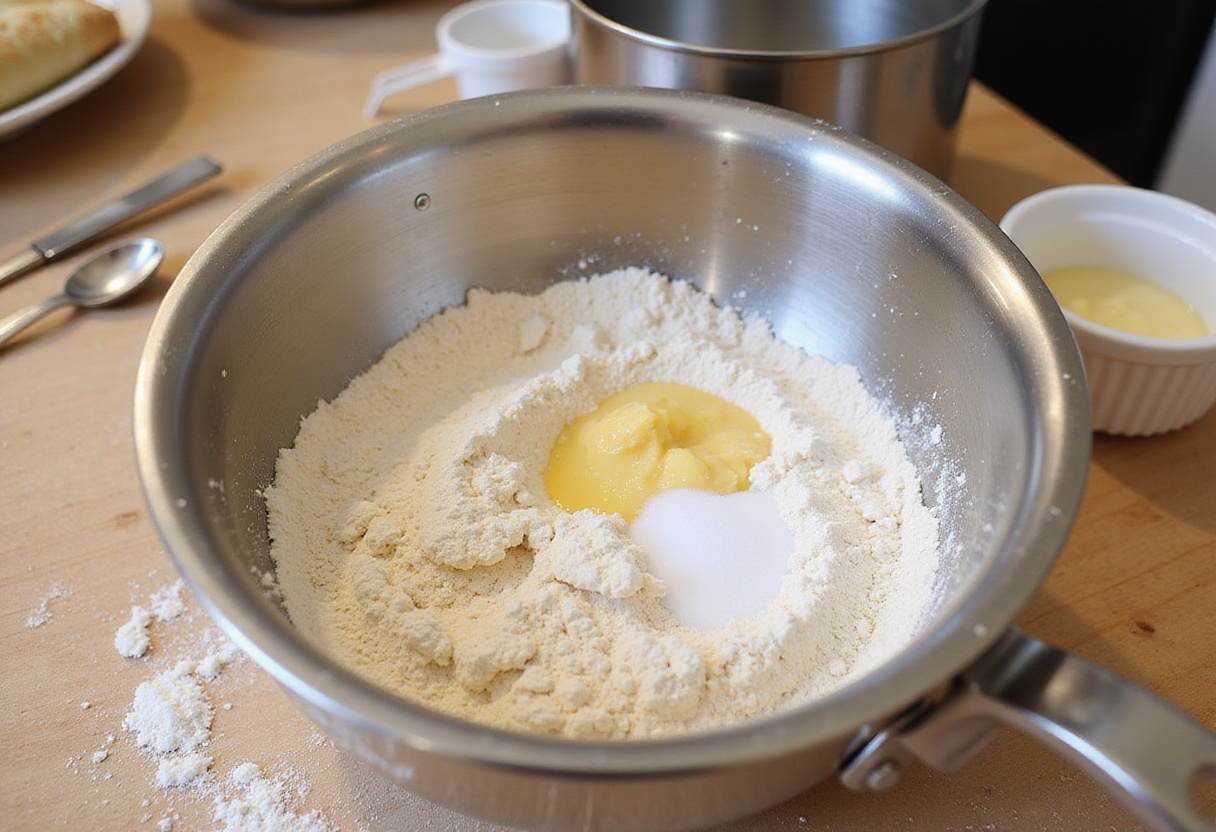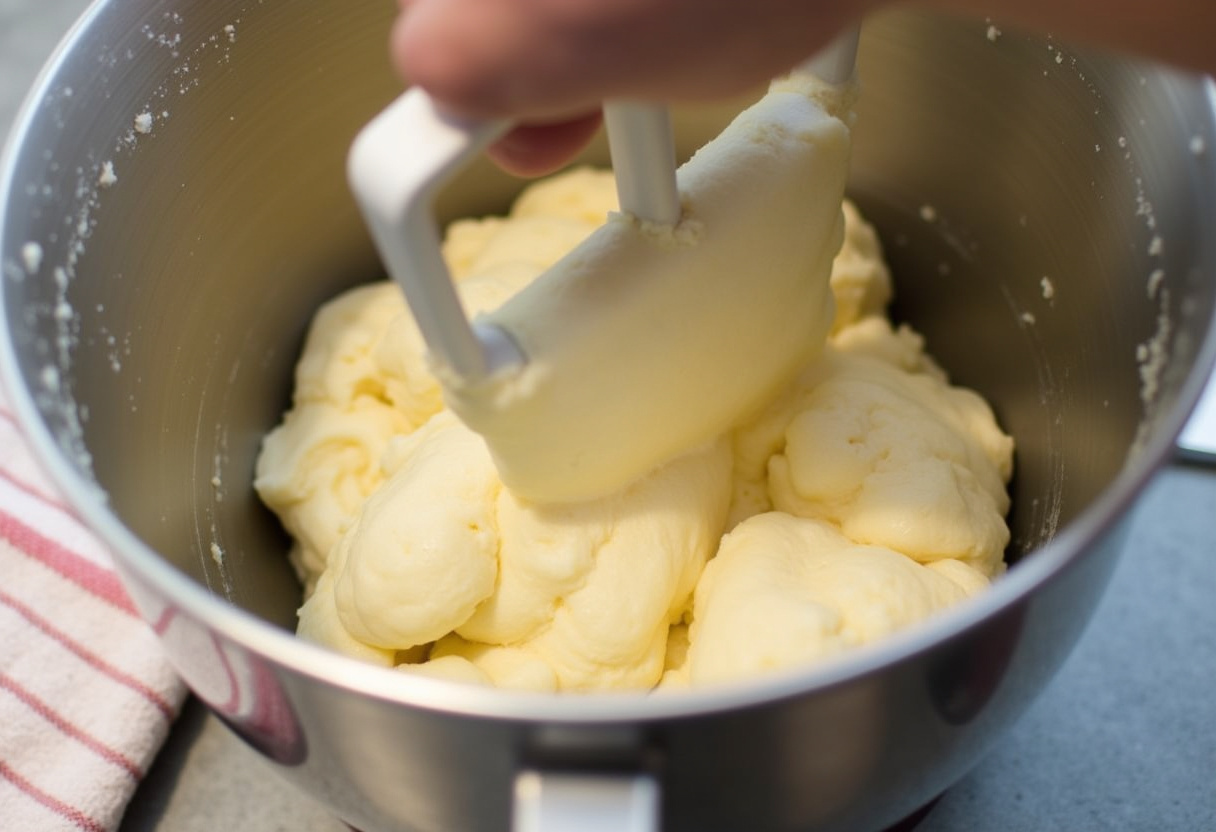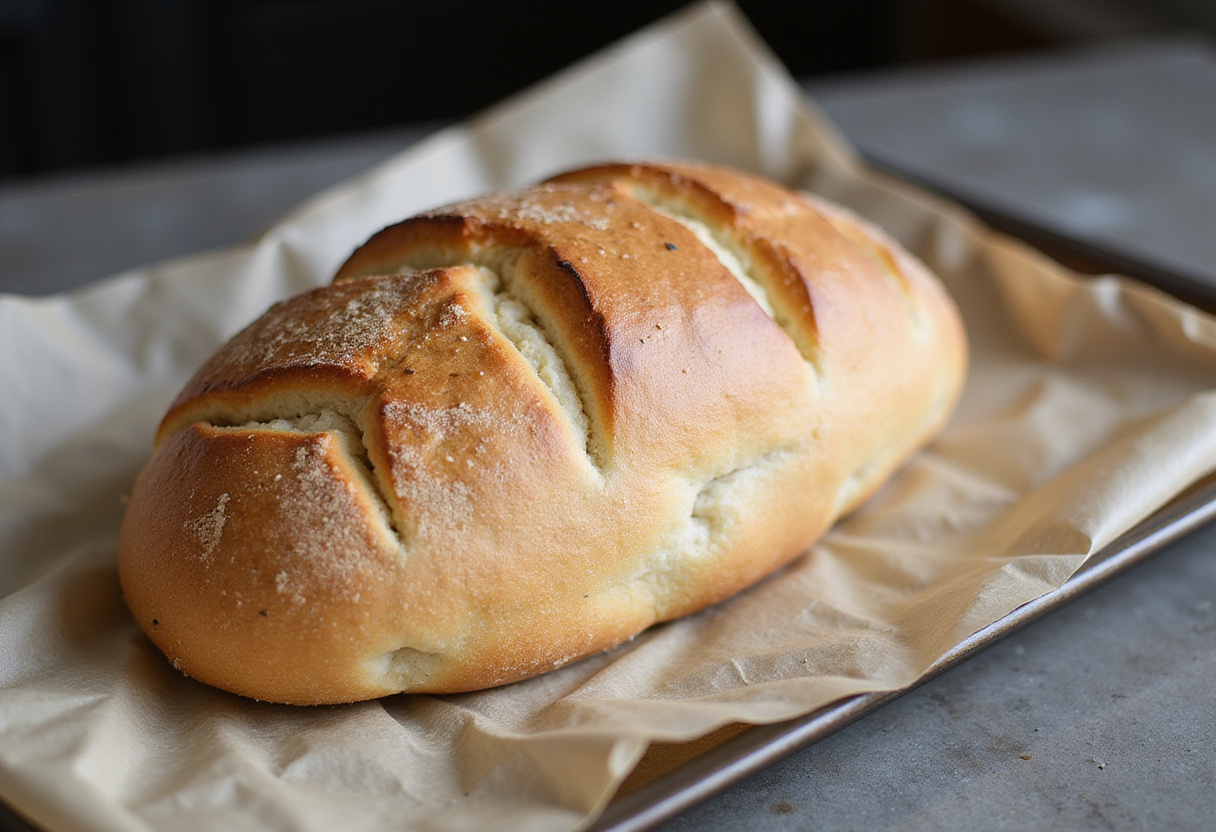Batard Bread Recipe: Crafting the Quintessential Artisan Loaf at Home 🥖✨🏡
1. Introduction
There’s something undeniably satisfying about baking your own bread, and the Batard Bread Recipe is a fantastic place to start. If you’re new to baking, don’t be intimidated! Our step-by-step guide makes even complex recipes like this accessible. As a cousin to the baguette, the batard offers a slightly sturdier structure with a similar delightful taste and texture. This French Batard, an artisan bread known for its elongated oval shape, is perfect for sandwiches, toast, or simply enjoying with a smear of butter. Our homemade batard recipe is designed to guide you through each step, ensuring a delicious outcome that rivals bakery-quality loaves. From mixing the dough to the final bake, you’ll discover the joy of creating your own perfectly crusty and flavorful batard bread at home. Looking for more inspiration for your next baking adventure? Check out our other delicious recipes!

2. Understanding Batard Bread
The batard, often called a “torpedo” or “boat” shape, bridges the gap between the baguette and the boule, offering a delightful middle ground for bread enthusiasts. This makes it a versatile choice for various culinary uses. Its shape provides a good balance of crust and crumb, ensuring each slice is full of flavor and texture. A successful batard bread recipe hinges on understanding the key elements: quality ingredients, proper kneading, patient proofing, and a hot oven. By mastering these, you’ll be well on your way to creating the perfect artisan bread. Craving something to eat *with* your fresh batard? Browse our soups category for the perfect pairing.
3. Ingredients for the Perfect Batard
To create an exceptional Artisan Bread, you’ll need just a few simple ingredients:
- 3 1/2 cups (420g) bread flour, plus more for dusting
- 1 3/4 cups (420ml) warm water (105-115°F)
- 2 teaspoons (7g) active dry yeast
- 2 teaspoons (12g) salt
These ingredients are the foundation of our batard bread recipe, each playing a crucial role in the final product. Bread flour provides the necessary gluten for structure, warm water activates the yeast, and salt enhances the flavor while controlling the yeast’s activity. For more information on different types of flours and their uses, a great resource can be found at The Perfect Loaf.
4. Step-by-Step Batard Bread Recipe
1. Prepare the Dough
In a large mixing bowl, dissolve the yeast in warm water and let it sit for 5-10 minutes until frothy. This indicates that the yeast is active. Add the flour and salt to the yeast mixture. Mix until a shaggy dough forms. If using a stand mixer, mix on low speed with a dough hook. Thinking ahead to what you’ll have with your bread? Maybe some awesome appetizers?

2. Knead the Dough
Turn the dough out onto a lightly floured surface and knead for 8-10 minutes until it becomes smooth and elastic. If using a stand mixer, continue kneading on medium speed for the same amount of time. The dough should be slightly sticky but manageable. Proper kneading is essential for developing the gluten, which gives the batard its structure and chewiness. Don’t skip this step! Need inspiration for dinner tonight? Maybe dinner ideas?

3. First Proof
Place the dough in a lightly oiled bowl, turning to coat. Cover with plastic wrap or a damp cloth. Let it rise in a warm place for 1-1.5 hours, or until doubled in size. This first proofing allows the yeast to work its magic, creating the air pockets that give the batard its airy crumb. Patience is key here; don’t rush the process. While you wait why not plan your next delicious desserts?

4. Shape and Second Proof
Gently deflate the dough and turn it out onto a lightly floured surface. Shape it into an elongated oval, roughly 12-14 inches long. Place the shaped dough on a baking sheet lined with parchment paper. Cover loosely with plastic wrap and let it proof for another 30-45 minutes. While it proofs, preheat your oven to 450°F (232°C) with a baking stone or Dutch oven inside. Scoring the loaf just before baking allows for controlled expansion in the oven. Ready to serve your freshly-baked bread? Consider pairing it with a vibrant salad.

5. Baking Your Batard
Carefully score the top of the loaf with a sharp knife or lame. For a traditional look, make a single long slash or a few overlapping diagonal cuts. If using a baking stone, slide the parchment paper with the loaf onto the hot stone. If using a Dutch oven, carefully place the loaf inside. Bake for 20 minutes with the lid on (if using a Dutch oven), then remove the lid and bake for another 20-25 minutes, or until the crust is golden brown and the internal temperature reaches 200-210°F (93-99°C). Cooling the batard completely on a wire rack is crucial for achieving the perfect crust and crumb.
6. Tips for the Best Batard Bread Recipe
- Use a kitchen scale for accurate measurements, especially for the flour and water.
- Ensure your yeast is fresh and active.
- Don’t over-knead the dough; aim for a smooth and elastic texture.
- Proof the dough in a warm, draft-free environment.
- Use a baking stone or Dutch oven for a crispier crust.
- Let the batard cool completely before slicing to prevent a gummy texture.
7. Serving Suggestions
The French Batard is incredibly versatile. Enjoy it fresh with butter or olive oil, use it for sandwiches, make toast, or serve it alongside soups and stews. Its robust flavor and satisfying texture make it a welcome addition to any meal. You can also slice and grill it for bruschetta or use it to make croutons for salads. Looking for inspiration for using your bread in elegant ways? Check our breakfast and brunch options.
8. Variations on the Batard Bread Recipe
Once you’ve mastered the basic batard bread recipe, feel free to experiment with different variations. Try adding herbs like rosemary or thyme for anHerbed French Batard. Incorporate whole wheat flour for a nuttier flavor, or add olives or sun-dried tomatoes for a Mediterranean twist. The possibilities are endless, so get creative and make it your own. Considering something meaty to go with it? Perhaps look at chicken recipes for exciting options!
9. Conclusion
Baking your own Batard Bread Recipe is a rewarding experience that brings the charm of artisan bread right into your kitchen. With simple ingredients and a bit of patience, you can create a loaf that’s perfect for any occasion. Learn more about us! So, gather your ingredients, follow our guide, and enjoy the delightful aroma and taste of freshly baked artisan bread. Happy baking!
Print
batard bread
- Total Time: 1 hour 20 minutes
- Yield: 1 loaf 1x
- Diet: Vegetarian
Description
Discover the joy of baking with this Batard Bread Recipe, an artisan loaf that’s perfect for sandwiches or enjoying with butter. With its sturdy structure and delightful taste, you’ll be inspired to craft your own bakery-quality batard bread at home.
Ingredients
- 3 1/2 cups (420g) bread flour, plus more for dusting
- 1 3/4 cups (420ml) warm water (105-115°F)
- 2 teaspoons (7g) active dry yeast
- 2 teaspoons (12g) salt
Instructions
- Dissolve the yeast in warm water and let it sit for 5-10 minutes until frothy.
- Add flour and salt to the yeast mixture, mixing until a shaggy dough forms.
- Knead the dough on a floured surface for 8-10 minutes until smooth and elastic.
- Place the dough in a lightly oiled bowl, cover, and let it rise for 1-1.5 hours until doubled in size.
- Deflate the dough, shape it into an elongated oval, and proof for another 30-45 minutes while preheating your oven to 450°F.
- Score the top of the loaf and bake for 20 minutes with the lid on, then remove the lid and bake for an additional 20-25 minutes.
- Cool completely on a wire rack before slicing.
Notes
- Use a kitchen scale for accuracy.
- Ensure yeast is fresh and active.
- Avoid over-kneading; target a smooth texture.
- Proof in a warm, draft-free spot.
- A baking stone or Dutch oven enhances crust quality.
- Cool the loaf fully to avoid gumminess.
- Prep Time: 30 minutes
- Cook Time: 40-50 minutes
- Category: Bread
- Method: Baking
- Cuisine: French
Nutrition
- Serving Size: 1 slice
- Calories: 150 Kcal
- Sugar: 0.5g
- Sodium: 220mg
- Fat: 1g
- Saturated Fat: 0g
- Unsaturated Fat: 0.5g
- Trans Fat: 0g
- Carbohydrates: 30g
- Fiber: 1g
- Protein: 5g
- Cholesterol: 0mg



